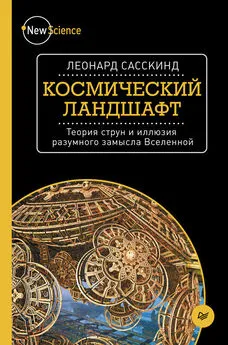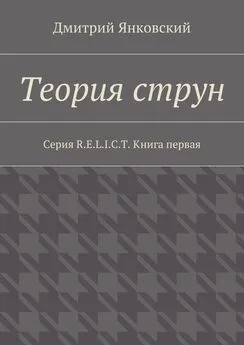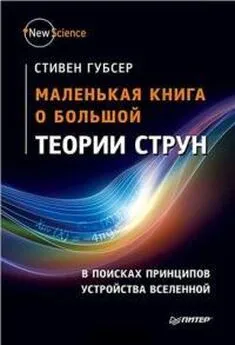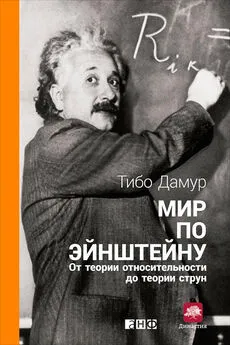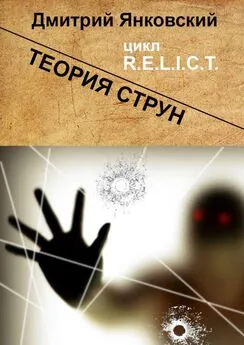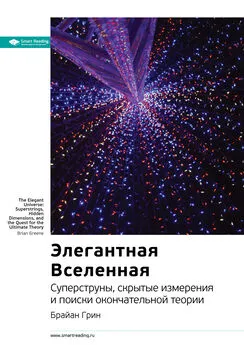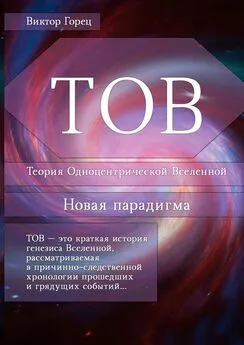Шинтан Яу - Теория струн и скрытые измерения Вселенной
- Название:Теория струн и скрытые измерения Вселенной
- Автор:
- Жанр:
- Издательство:Питер
- Год:2012
- Город:Санкт-Петербург
- ISBN:978-5-459-00938-5
- Рейтинг:
- Избранное:Добавить в избранное
-
Отзывы:
-
Ваша оценка:
Шинтан Яу - Теория струн и скрытые измерения Вселенной краткое содержание
Революционная теория струн утверждает, что мы живем в десятимерной Вселенной, но только четыре из этих измерений доступны человеческому восприятию. Если верить современным ученым, остальные шесть измерений свернуты в удивительную структуру, известную как многообразие Калаби-Яу. Легендарный математик Шинтан Яу, один из первооткрывателей этих поразительных пространств, утверждает, что геометрия не только является основой теории струн, но и лежит в самой природе нашей Вселенной.
Читая эту книгу, вы вместе с авторами повторите захватывающий путь научного открытия: от безумной идеи до завершенной теории. Вас ждет увлекательное исследование, удивительное путешествие в скрытые измерения, определяющие то, что мы называем Вселенной, как в большом, так и в малом масштабе.
Теория струн и скрытые измерения Вселенной - читать онлайн бесплатно полную версию (весь текст целиком)
Интервал:
Закладка:
72
Brian Greene, The Fabric of the Cosmos (New York: Alfred A. Knopf, 2004), p. 372.
73
P. Candelas, G. Horowitz, A. Strominger, and E. Witten, “Vacuum Configurations for Superstrings,” Nuclear Physics В 258 (1985): 46–74.
74
Edward Witten (IAS), e-mail letter to author, July 24, 2008.
75
Volker Braun, Philip Candelas, and Rhys Davies, “A Three-Generation Calabi-Yau Manifold with Small Hodge Numbers,” October 28, 2009, http://arxiv.org/PS_cache/arxiv/pdf/0910/0910.5464vl.pdf.
76
Dennis Overbye, “One Cosmic Question, Too Many Answers,” New York Times, September 2, 2003.
77
Dale Glabach and Juan Maldacena, “Who’s Counting?” Astronomy, May 2006, p. 72.
78
Andrew Strominger, “String Theory, Black Holes, and the Fundamental Laws of Nature,” lecture, Harvard University, Cambridge, Mass., April 4, 2007.
79
Edward Witten (IAS), e-mail letter to author, July 21, 2008.
80
Petr Horava (University of California, Berkeley), interview with author, July 6, 2007.
81
Ibid.
82
Аллюзия на цитату из поэмы Томаса Стернза Элиота «Полые люди»: «Не взрыв, но всхлип». — Примеч. перев.
83
Ronen Plesser (Duke University), interview with author, September 3, 2008.
84
Ibid.
85
Marcus Grisaru (McGill University), interview with author, August 18, 2008.
86
Plesser, interview with author, September 3, 2008.
87
Shamit Kachru (Stanford University), interview with author, August 19, 2008.
88
Ashoke Sen (Harish-Chandra Research Institute), interview with author, August 22, 2008.
89
Jacques Distler and Brian Greene, “Some Exact Results on the Superpotential from Calabi-Yau Compactifications,” Nuclear Physics В 309 (1988): 295–316.
90
Doron Gepner, “Yukawa Couplings for Calabi-Yau String Compactification,” Nuclear Physics В 311 (1988): 191–204.
91
Kachru, interview with author, August 19, 2008.
92
Paul Aspinwall (Duke University), interview with author, August 14, 2008.
93
Wolfgang Lerche, Cumrun Vafa, and Nicholas Warner, “Chiral Rings in N= 2 Superconformal Theories,” Nuclear Physics В 324 (1989): 427–474.
94
В. R. Greene, C. Vafa, N. P. Warner, “Calabi-Yau Manifolds and Renormalization Group Flows,” Nuclear Physics В 324 (1989): 371–390.
95
Brian Greene (Columbia University), interview with author, March 11,2010.
96
Ibid.
97
Doron Gepner, interview with author, August 19, 2008.
98
B. R. Greene and M. R. Plesser, “Duality in Calabi-Yau Moduli Space,” Nuclear Physics В 338 (1990): 15–37.
99
Brian Greene, The Elegant Universe (New York: Vintage Books, 2000), p. 258.
100
Plesser, interview with author, September 19, 2008.
101
Greene, interview with author, March 11, 2010.
102
Greene, T he Elegant Universe , p. 259.
103
Cumrun Vafa (Harvard University), interview with author, September 19, 2008.
104
Greene, interview with author, March 13, 2010.
105
Mark Gross (UCSD), interview with author, October 31, 2008.
106
Andreas Gathmann (University of Kaiserslautern), interview with author, August 25, 2008.
107
David Hilbert, “Mathematical Problems,” lecture, International Congress of Mathematicians, Paris, 1900, http://alephO.clarku.edu/~djoyce/hilbert/problems.html(html version prepared by David Joyce, Mathematics Department, Clark University, Worcester, Mass.).
108
Andreas Gathmann, “Mirror Principle I,” Mathematical Reviews , MR1621573, 1999.
109
David Cox (Amherst College), interview with author, June 13, 2008.
110
Andrew Strominger (Harvard University), interview with author, February 7 , 2007.
111
Gross, interview with author, September 19, 2008.
112
Ibid.
113
Gross, interview with author, September 24, 2008.
114
Eric Zaslow (Northwestern University), interview with author, June 26, 2008.
115
Gross, interview with author, September 24, 2008.
116
Mark Gross, e-mail letter to author, September 29, 2008.
117
Strominger, interview with author, August 1, 2007.
118
Zaslow, interview with author, June 26, 2008.
119
Gross, interview with author, September 19, 2008.
120
Yan Soibelman (Kansas State University), interview with author, September 26, 2008.
121
Aspinwall, interview with author, June 23, 2008.
122
Michael Douglas (Stony Brook University), interview with author, August 20, 2008.
123
Aspinwall, interview with author, June 23, 2008.
124
Gross, interview with author, September 24, 2008.
125
Avi Loeb (Harvard University), interview with author, September 25,2008.
126
American Mathematical Society, “Interview with Heisuke Hironaka,” Notices of the AMS 52, no. 9 (October 2005): 1,015.
127
Steve Nadis, “Cosmic Inflation Comes of Age,” Astronomy (April 2002).
128
Andrew Strominger, “String Theory, Black Holes, and the Fundamental Laws of Nature,” lecture, Harvard University, Cambridge, Mass., April 4, 2007.
129
Ibid.
130
Hirosi Ooguri (California Institute of Technology), interview with author, October 8, 2008.
131
Strominger, lecture.
132
Andrew Strominger and Cumrun Vafa, “Microscopic Origin of the Bekenstein-Hawking Entropy,” Physics Letters В 379 (June 27, 1996): 99-104.
133
Andrew Strominger, quoted in Gary Taubes, “Black Holes and Beyond,” Science Watch , May/June 1999, http://archive.sciencewatch.com/may-june99/sw_may-june99_page3.htm.
134
Hirosi Ooguri, interview with author, October 8, 2008.
135
Strominger, quoted in Taubes, “Black Holes and Beyond.”
136
Xi Yin (Harvard University), interview with author, October 14, 2008.
137
Ibid.
138
Xi Yin, interview with author, October 22, 2008.
139
Frederik Denef (Harvard University), interview with author, August 26, 2008.
140
Xi Yin, interview with author, October 14, 2008.
141
Aaron Simons, interview with author, February 9, 2007.
142
Ibid.
143
J. M. Maldacena, A. Strominger, and E. Witten, “Black Hole Entropy in M-Theory” Journal of High Energy Physics 9712 (1997), http://arxiv.org/PS_cache/hepth/pdf/9711/9711053vl.pdf.
144
Juan Maldacena (IAS), interview with author, September 4, 2008.
145
Hirosi Ooguri, Andrew Strominger, and Cumrun Vafa, “Black Hole Attractors and the Topological String,” Physical Review D 70 (2004).
146
Cumrun Vafa (Harvard University), interviewwith author, September 26, 2008.
147
James Sparks (Harvard University), interview with author, February 6, 2007.
148
Amanda Gefter, “The Elephant and the Event Horizon,” New Scientist (October 26,2006): 36–39.
149
John Preskill, “On Hawking’s Concession,” July 24, 2004, http://www.theory.caltech.edu/~preskill/jp_24jul04.html.
150
Andrew Strominger (Harvard University), interview with author, February 7, 2007.
151
Juan Maldacena, “The Illusion of Gravity,” Scientific American , November 2005, pp. 57–58, 61.
152
Davide Castelvecchi, “Shadow World,” Science News 172 (November 17,2007).
153
Taubes, “Black Holes and Beyond.”
154
L. Frank Baum, The Wizard of Oz (Whitefish, Mont.: Kessinger, 2004), p. 111.
155
Volker Braun (Dublin Institute for Advanced Studies), interview with author, November 4, 2008.
156
Philip Candelas (Oxford University), interview with author, December 1, 2008.
157
Ibid.
158
Andrew Strominger (Harvard University), interview with author, February 7, 2007.
159
Cumrun Vafa, “The Geometry of Grand Unified Theories,” lecture, Harvard University, Cambridge, Mass., August 29, 2008.
160
Chris Beasley (Stony Brook University), interview with author, November 13, 2008.
161
Burt Оvrut (University of Pennsylvania), interview with author, July 20, 2008.
162
Ovrut, interview with author, February 2, 2007.
163
Ron Donagi (University of Pennsylvania), interview with author, November 14, 2008.
164
Donagi, interview with author, November 19, 2008.
165
Candelas, interview with author, December 1, 2008.
166
Donagi, interview with author, May 3, 2008
167
Ovrut, interview with author, November 20, 2008.
168
Donagi, interview with author, November 20, 2008.
169
Ovrut, interview with author, November 20, 2008.
170
Shamit Kachru (Stanford University), interview with author, November 4, 2008.
171
Michael Douglas (Stony Brook University), interview with author, August 20, 2008.
Читать дальшеИнтервал:
Закладка:
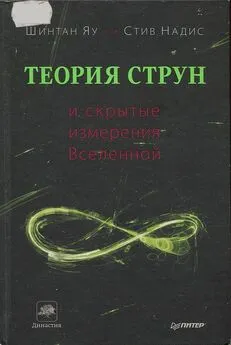

![Стивен Хокинг - Теория всего[Происхождение и судьба Вселенной]](/books/343338/stiven-hoking-teoriya-vsego-proishozhdenie-i-sudba.webp)
